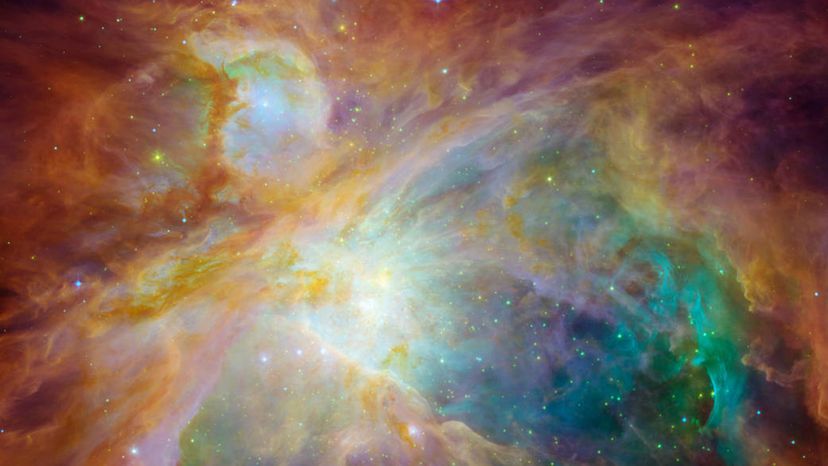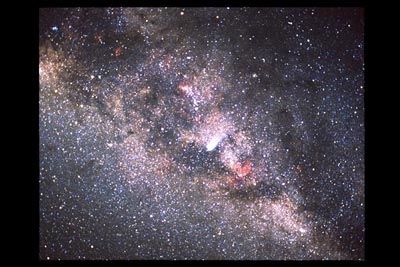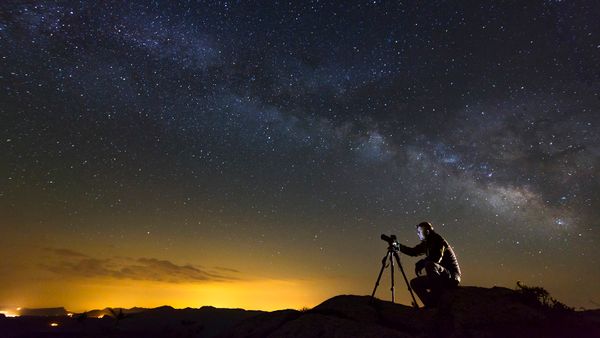
Deep inside the Orion Nebula, an epic battle of stellar supremacy is being duked out. A baby star inside the famed stellar nursery is dictating how and where its unborn siblings can spark to life — if it allows them to live at all.
Using NASA's Stratospheric Observatory for Infrared Astronomy (SOFIA) — a huge 106-inch (2.7-meter) diameter telescope that is flown inside the fuselage of a modified Boeing 747SP jetliner — astronomers can get a crystal-clear view of the nebula and view the otherwise invisible stars in infrared wavelengths. If the same telescope was used on the ground, the water vapor in our atmosphere would absorb the infrared light. So, as SOFIA flies above 99 percent of our atmosphere, it's almost as good as having that telescope in space, minus the launch costs.
Advertisement
Even though the young stars are cocooned inside thick clouds of gas and dust, the infrared light they generate passes straight through unimpeded and is studied by SOFIA during flight. But, in new research announced at the 233rd meeting of the American Astronomical Society in Seattle on Jan. 7, it's not the baby stars that are of interest, it's the powerful stellar winds they generate.
To form a star in a nebula, molecular gases clump together under gravity. If enough gas accumulates in these clumps, the gravity becomes so intense that nuclear fusion occurs. During this early violent phase, baby stars generate ferocious stellar winds that create rapidly expanding bubbles of hot gas. Using one of SOFIA's instruments, the German Receiver for Astronomy at Terahertz Frequencies, or GREAT, researchers peered deep into the Orion Nebula and measured the spectral fingerprint of ionized carbon inside an expanding bubble to clock the stellar wind speeds.
"Astronomers use GREAT like a police officer uses a radar gun," said astronomer Alexander Tielens, from Leiden Observatory, in a statement. "The radar bounces off your car, and the signal tells the officer if you're speeding."
The researchers used this ionized carbon signal like a tracer throughout the entire nebula, forming a map of wind speeds and the locations of stars. With this data, they learned how stellar wind interactions may influence the distribution of star birth.
Until now, it was assumed that other stellar events, such as supernovas, have the final say on star formation, but this study indicates that it might be the baby stars themselves that have a greater impact on the distribution of star-forming material.
For example, the bubble surrounding Theta^1 Ori C, a star near the center of the Orion Nebula, has a huge impact on star birth in its stellar neighborhood. It has snuffed out any chance of new stars forming nearby, but the powerful stellar winds have pushed the molecular gases to the bubble's outermost edge, creating new regions of dense star-forming material. In this case, although there may be few siblings for Theta^1 Ori C to grow up with, its presence has created new, fertile regions in the nebula for future star birth.
This study has provided an unparalleled look into how stellar nurseries form and how the newborn stars can influence the formation of their younger siblings. They can kill stellar formation by blowing away the seed material, but their winds can also corral stellar gases into dense regions, thereby boosting opportunities for star birth in other locations.
Advertisement

